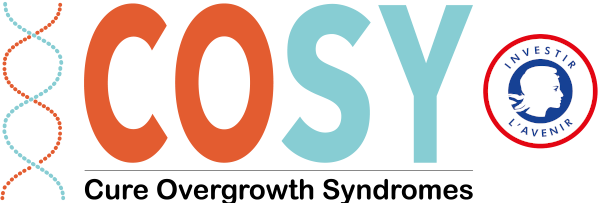Health Professionals
Follow-up is often coordinated by a geneticist or dermatologist at the expert centers. In the case of children, they are also regularly followed by a pediatrician or a general practitioner. Patients are informed of possible complications and always supported by their expert centers.
Usually, several specialists are needed for the management of the patient, whose solicitation will not be systematic, but depending on the clinical presentation and its evolution: vascular doctors, orthopedic surgeons, plastic surgeons, digestive surgeons, pediatric surgeons, functional re-education physicians, radiologists, interventional radiologists, anesthesiologists, hematologists, hemostasis, molecular biologists, otolaryngologists, stomatologists, gastroenterologists, thoracic surgeons, neurologists, urologists, nephrologists, cardiologists, maxillofacial surgeons, neurosurgeons, cardiovascular surgeons…
If necessary, all the medical care is done along with other health professionals depending on the patient’s impairments: nurses, physiotherapists, occupational therapists, psychologists, orthoprothesists, dentists, orthodontists, podiatrists, dieticians, psychomotors, speech language pathologists…
All these professionals work alongside general practitioners, pediatricians, dermatologists, and/or geneticists for overall patient care, and all the expert center professionals remain available as the main interlocutors.
At School
The school’s health professional and social worker are a great support for families. They help to solve medical-social problems. The social worker can provide assistance with administrative procedures, support the relationship with administrative bodies, supervise school integration, offer vocational guidance, and inform of legislation relative to disability if the clinical situation requires it.
Regularity and content of medical follow-up
Usually, 2 to 3* jointly follow-up consultations with dermatologists and genetics are organized per year.
1* annual (or more frequent) clinical examination is recommended: follow-up of vascular, lymphatic, venous malformations, cutaneous manifestations, lipomatous masses, complete orthopedic examination, particularly including the vertebral statics, hypertrophy, thromboembolic risk, and sometimes cardiac.
* The frequency of medical consultations and exams should be adapted according to the clinical presentation as well as its evolution.
Therapeutics and treatment
Currently, no specific treatment for OS with a marketing authorization (MA) is available, but there are PI3K inhibitors available through Temporary Authorisation for Use (ATU) and/or therapeutic trials.
If a patient is eligible to be included in a therapeutic trial, this option is always preferable due to the constant drug safety monitoring, the addition to medical knowledge related to the treatment, and the possibility of being listed for future therapeutics.
